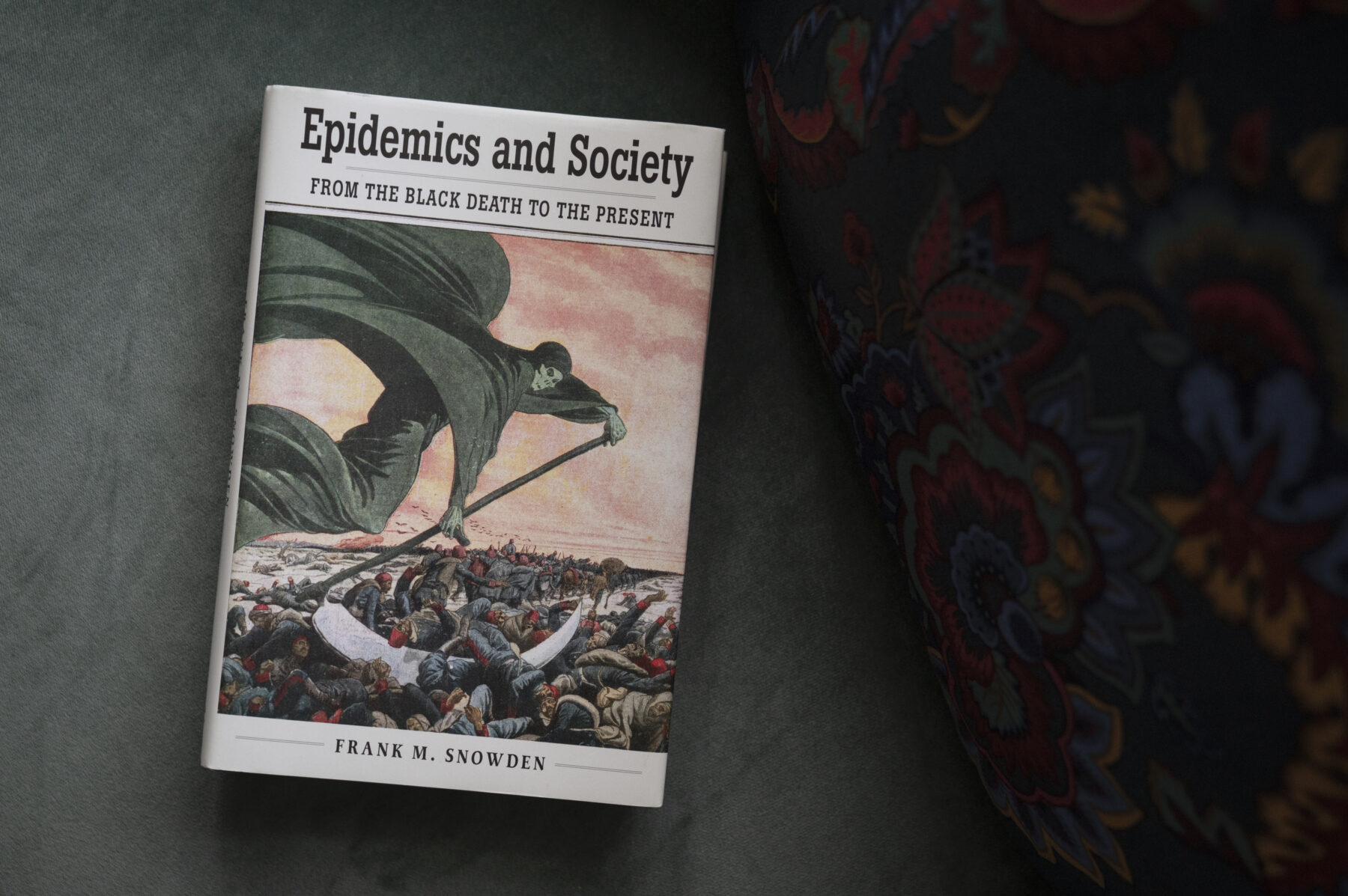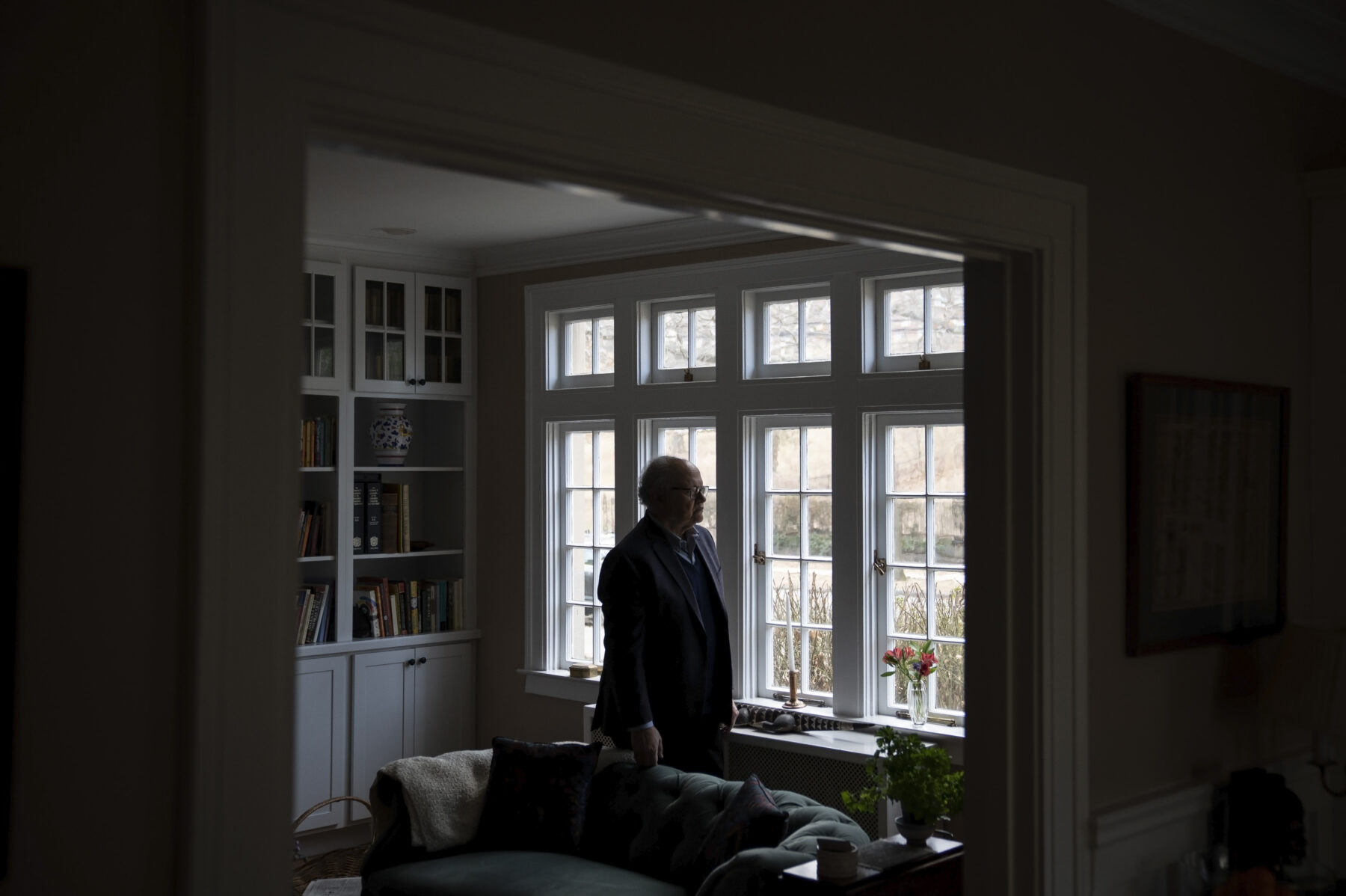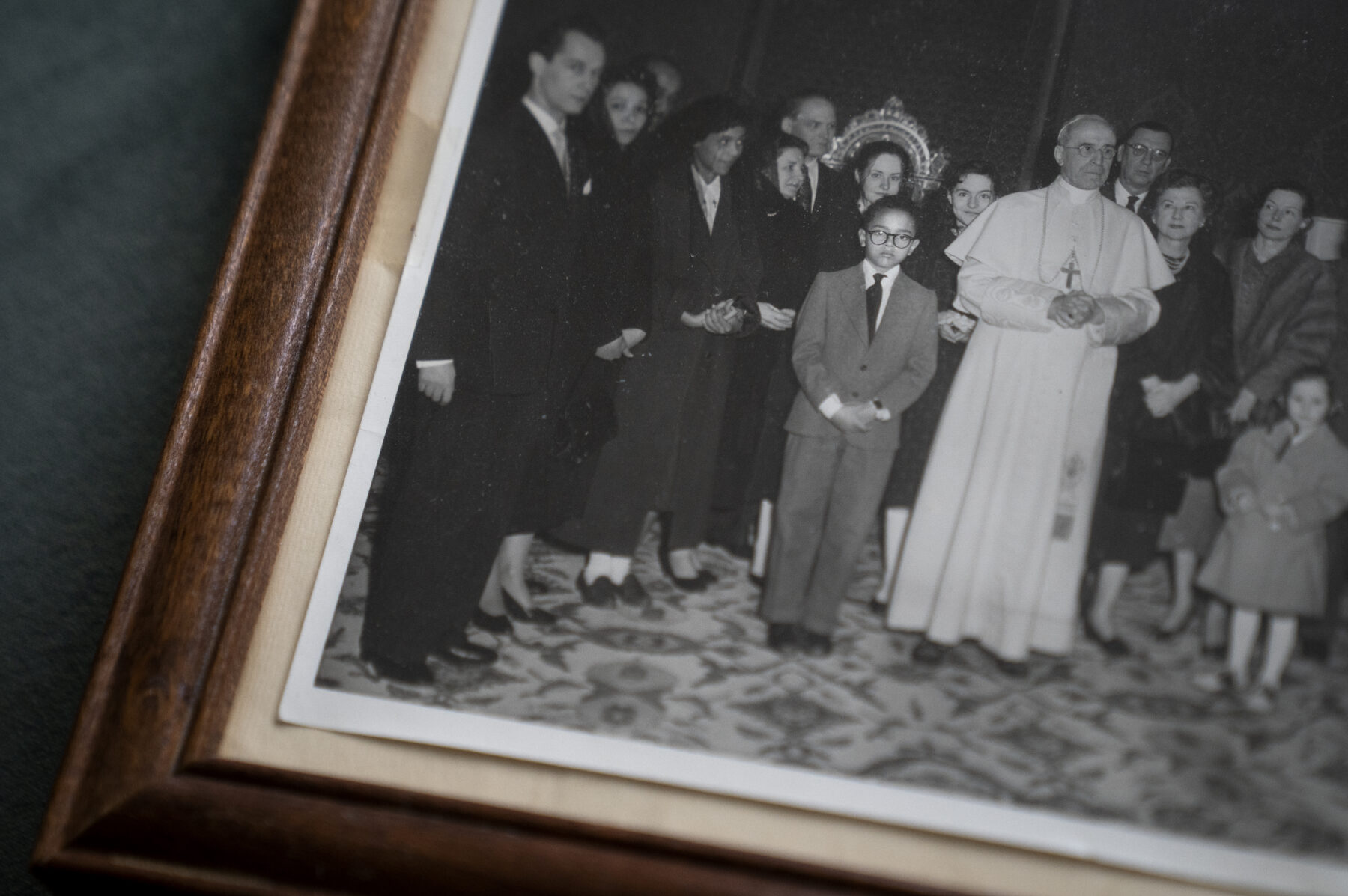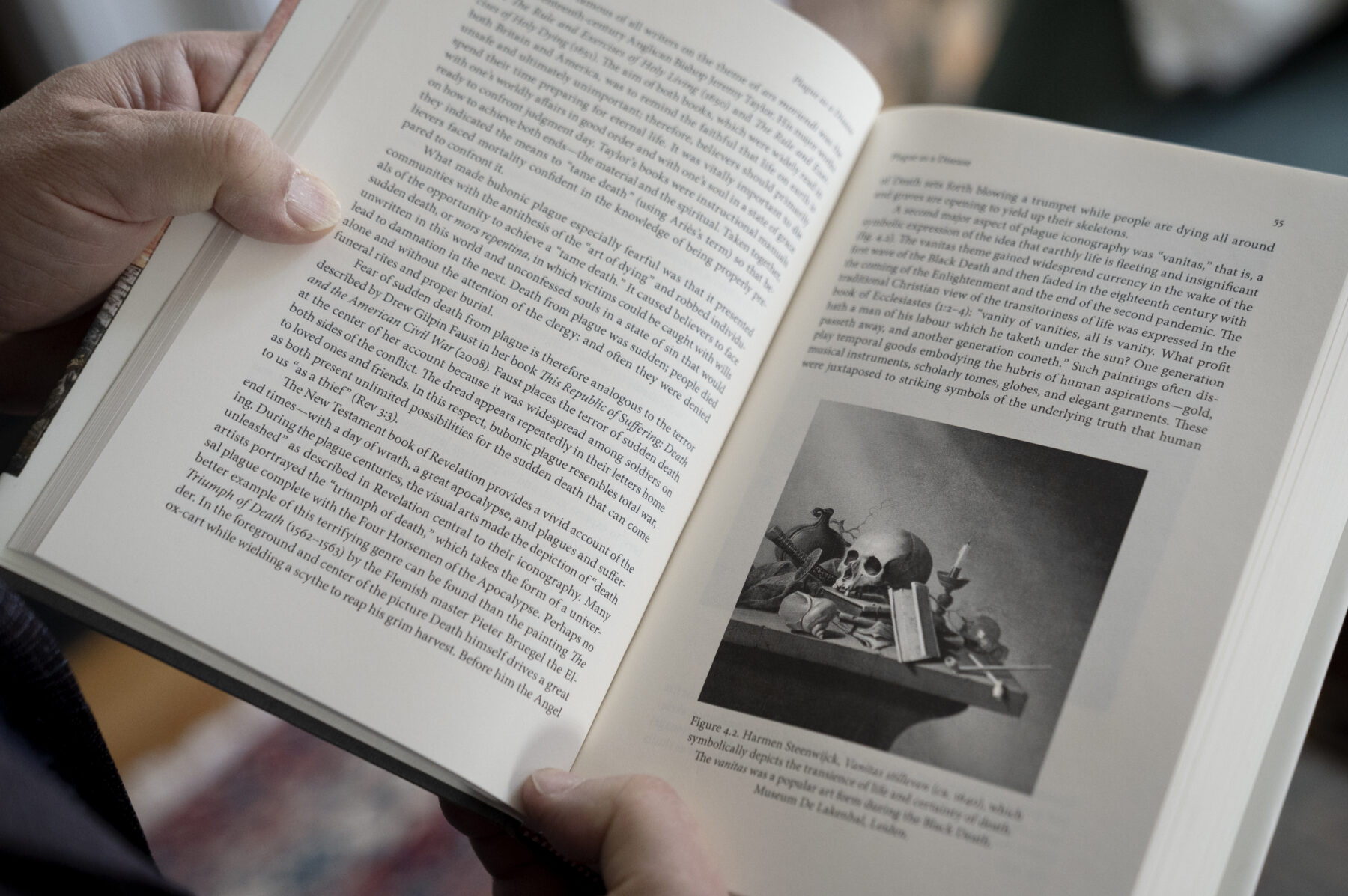“Everyone who is born holds dual citizenship, in the kingdom of the well and in the kingdom of the sick. Although we all prefer to use only the good passport, sooner or later each of us is obliged, at least for a spell, to identify ourselves as citizens of that other place.”
In 1975, three years before she published Illness as Metaphor, the book that contains the pair of sentences above, Susan Sontag learned that she was dying of cancer. Sontag wrote to eviscerate the ubiquitous metaphors (illness-as-battle, patient-as-warrior, cancer-as-demonic-pregnancy, etc.) that surrounded and, in her view, obscured our understanding of illness. She was concerned not with the actual geography of the “kingdom of the ill,” the tangible experience of life with disease, but the “lurid metaphors with which it has been landscaped.”
Frank M. Snowden III is a political scientist by training and medical historian by happenstance. In 2007, when he was named the chair of Yale’s Program in the History of Science and Medicine, he quipped to his wife that his appointment was a sign of how far the program had sunk. “I’d just been made the chair, and I didn’t have a degree in history, or science, or medicine,” he says with a smile. Snowden has spent forty years studying epidemics and the societies in which they occur, in other words, the actual—not metaphorical—kingdoms of the ill.
Infectious diseases “are as important to understanding societal development as economic crises, wars, revolutions, and demographic change,” he writes in the introduction to his 2019 tome, Epidemics and Society: From the Black Death to the Present, a six-hundred-page synthesis of Snowden’s decades of teaching history undergraduates with limited knowledge of science and science undergraduates with limited knowledge of history.

The theory that unites Snowden’s scholarship and pedagogy is that epidemics are neither random manifestations of biology nor punishments from a higher power, but equal and opposite reactions to the forces of social, economic, and political organization in a particular time and place. Societies create their own vulnerabilities to infectious disease, and preventing epidemics means recognizing—and rectifying—those vulnerabilities. “Meteorologists can’t tell you how strong the winds are going to be, and they can’t predict what year it’s coming,” says Snowden, “but if you live in the Caribbean, you’d be really unwise if you didn’t prepare for a hurricane.”
For decades, Snowden and colleagues warned that the modern world was critically ignorant of the epidemiological storm waiting to happen. Their concern, however, demanded little attention beyond public health institutions and academic journals. That was, of course, until two years ago—when the sky darkened and the wind began to blow.
*
The seventh cholera pandemic was first identified in 1961, in Java, Indonesia. The disease spent the next decade criss-crossing Asia before making its way to the Middle East, North Africa, and—by way of the Mediterranean, in 1973—Naples, an Italian port city so unhygienic that even its residents thought it a dangerous place to live. In September of that year, Italian President Giavanni Leone visited the city’s Cotugno infectious disease hospital and was photographed shaking hands with a cholera patient while holding the corne (rock-and-roll finger horns) behind his back, a folklore gesture meant to ward off evil spirits. “Naples once again presents the mortifying picture of its wounds and problems to the attention of the country,” he concluded. Then the outbreak spread to Rome.
At the time, Frank Snowden was a 27 year-old political science doctoral student at Oxford, living near the Vatican and doing research for a dissertation on Italian fascism. When cholera arrived in Rome, Snowden saw its effects first hand: stones thrown through the windows of cars with Naples license plates, produce stands overturned, shopkeepers beaten in the streets by angry mobs. Social upheaval, political strife, violence—exactly what Snowden had come to Italy to study—all engendered by a force he had hardly considered before then: disease.
A decade later, Snowden—by then, a lecturer in European history at the University of London—was working on a study of early twentieth century political violence in the South of Italy. But while conducting his fieldwork, he came across countless references to a cholera outbreak in Naples and the violent, xenophobic responses it had provoked. His sources referenced 1911, but, as far as the historical record was concerned, the last major European outbreak (1973 notwithstanding) had been in 1892. He went to Naples to fill in the gaps.
He began in the city graveyard, counting headstones. Then he visited the records room of Cotunga Hospital—the same hospital in which President Leone once warded off evil spirits—and found that the 1911 edition of the hospital’s annual death registry was orders of magnitude thicker than the years around it. He combed through the research wing’s archives and uncovered that, in 1911, the doctors at Cotugno happened to all be studying the same subject: cholera.
“I had the chance to do something that doesn’t happen very often,” Snowden says. “I was able to discover an epidemic that had no history.” The seed of curiosity planted a decade earlier in the sticky late summer of 1973 had sprouted. Snowden had a story on his hands—a forgotten epidemic, unanswered questions, and a whole lot of science to learn.
“I am committed to the view that you can’t write the history of diseases without understanding how they work,” says Snowden. Upon returning to England, Snowden spent a sabbatical in the Bodleian Library at Oxford, reading old editions of The Lancet, a medical journal. He began with the journal’s founding in 1823. “It’s something I wouldn’t recommend to anyone,” says Snowden, “But it did serve me in good stead.”
Snowden’s research on Italian cholera continued for more than a decade, and in 1991 it led him back to Yale, where he had been an assistant professor in the nineteen-seventies. This time, he was hired as a scholar with a unique dual-command of both scientific and social history. In 1995, he published Naples in the Time of Cholera, 1884–1911, the story of two outbreaks, why one was remembered and the other erased from history, and what they revealed about Italian society at the tumultuous turn of the century.
A decade later, Snowden published another book on Italy’s epidemic experience, The Conquest of Malaria: Italy, 1900-1962, which covered the country’s sixty-year mission to defeat what was once its “national disease.” The book illustrated the connections between malaria and twentieth century Italian politics—from how antimalarial education helped expand trade unions, civil liberties, and women’s rights to the German army’s use of malaria as a bioweapon in the second world war. Conquest was released to critical acclaim, winning prizes from the American Historical Association, the American Association for the History of Medicine, and the Malaria Foundation International.
In 2010, Snowden’s undergraduate class “Epidemics in Western Society Since 1600” was immortalized on YouTube as a Yale Open Course. In the decade since its posting, the course has accumulated nearly one hundred forty thousand views—half of which have been within the last two years.
“I would argue that emerging diseases are an inherent part of the human condition,” Snowden says to conclude the course’s final lecture. “And if I were to make just one prediction, I would expect that there would be more, and that the systems set in place and improved by SARS, avian flu, and swine flu will be tested again in our new century.”
*
Q: What is a disease? A: Who’s asking?
“Disease,” medical historian Charles Rosenberg writes in his 1992 book Explaining Epidemics, “is at once a biological event, a generation-specific repertoire of verbal constructs reflecting medicine’s intellectual and institutional history, an occasion for and potential legitimation of public policy, an aspect of social role and individual—intrapsychic—identity, a sanction for cultural values, and a structuring element in doctor-patient interactions.”
To study epidemics through the historian’s microscope is to integrate all of those definitions and the murky forces of causality between them, to examine how the cultural attitudes, political institutions, and biological mechanisms all shape the course of history.
The bubonic plague, Snowden writes in Epidemics and Society, exploited the urban squalor of medieval Europe, upset its cultural and religious conceptions of death, and permanently reshaped its political, economic, and demographic makeup. In the late eighteenth century, yellow fever drove the French army out of Haiti, and, in the early nineteenth, dysentery and typhus drove Napoleon and the French out of Russia. In the latter half of the nineteenth century, tuberculosis, in its glacial destruction of the body, came to signify beauty, pedigree, the lavish tragedy of a life too well-lived. Half-a-century later, the disease—reimagined through the innovation of “germ theory”—was transformed into a condition of the poor, the damned, the ragged men whose overgrown facial hair trapped the disease and spread it. In the nineteen-eighties, HIV/AIDS exposed both Western society’s vicious contempt for gay men, and its blatant indifference to life on the African continent.
And, in the early twenty-first century, Ebola and SARS illustrated the fundamental vulnerability of an interconnected world; the false comfort of national borders; the “hubris,” as Snowden describes it, of a world that both recognized the threat of epidemic disease and operated as if epidemics—at least, the epoch-defining kind—were simply behind it.
In March 2020, Snowden was again in Rome, working on a long-awaited book about the Cold War, when the coronavirus first hit Italy. Snowden and his partner both contracted Covid, mild cases, and confined themselves to quiet isolation in their apartment.
Then Snowden’s phone began to ring.

“I’ve often quipped that there are two kinds of doctors: medical doctors, the useful kind; and PhD’s, the useless kind,” Snowden says with a grin. “You don’t want to wake up in a gurney and see Frank standing there.”
And yet, with the world in a gurney, more people wanted to see Snowden than ever before in his life. “I think I was actually serving not in a medical therapeutic way, but in a sort of existential therapeutic way,” Snowden says. “People found it, in a way, really comforting to talk about the past.”
By the end of April, Snowden had appeared in the New Yorker, the Wall Street Journal, NPR, Vox, the Washington Post, and dozens of other American publications. Internationally, he spoke with journalists from Germany, Argentina, Korea, and Iran. Snowden estimates that he took part in some 150 interviews that year with reporters and writers and academic departments, all desperate to ask—“Has this happened before?”
*
If you ask Frank Snowden to whom the name “Frank Snowden” really belongs, he might say his father, Frank M. Snowden, Jr.: esteemed historian of the lives of Black people in antiquity; professor of classics at Howard University from 1940 to 1976; Dean of Howard’s college of liberal arts from 1956 to 1968; and cultural attaché for the U.S. State Department from 1954 to 1956, in Rome.
If you had asked Frank M. Snowden, Jr. to whom the name “Frank Snowden” really belonged, he might have said his father, Frank M. Snowden the first: a son of sharecroppers born in 1884 in Virginia; 1907 graduate of M Street High School in Washington, D.C.; enlistee in the First World War; senior Black officer at Camp Lee in the second; small-scale real estate entrepreneur thereafter; and grandfather to three grandchildren who referred to him only as “Colonel.”
In 1909, Charles W. Eliot—then president of Harvard University—published a collection of fifty books, classic works of literature, oratory, and history that, as he proclaimed in a 1910 advertisement, could “give any man the essentials of a liberal education, even if he can devote to them but fifteen minutes a day.” Colonel read them cover-to-cover. And while the Harvard Classics served him well, he wanted for his children a liberal arts education made of more than paper. When his son, Frank, Jr., approached schooling age, Colonel relocated the family from Yorktown, Virginia to Boston, Massachusetts—and, most importantly, the Boston public education system.

At Colonel’s behest, Frank, Jr., went to Harvard. In the 1920s, Harvard, at the wish of President Abbott Lawrence Lowell—the great Dr. Eliot’s successor—had re-segregated the College’s dorms, so Frank, Jr. commuted to class from Roxbury, Massachusetts. He would graduate with a bachelor’s degree in classics in 1932, a masters in 1933, and later, a doctorate, in 1944.
By the time of Frank the third’s birth in 1946, Frank, Jr.’s appointment at Howard had already brought the Snowdens back to Washington. But Colonel’s wish to create at any cost a lineage of success stories—to personally produce some small part of what W.E.B. Du Bois (a friend to Frank, Jr.) called the “talented tenth” of Black leaders—would follow the Snowdens far beyond Boston.
At first, Frank the third attended Lucy Diggs Slowe Elementary School, in Washington, D.C., an all-Black public school. When it came time for school to get serious, Frank was sent to St. Albans, an all-white preparatory school—at least until Frank’s arrival. Then eleven years old, Frank was informed that if he failed at St. Albans, the school would never admit a Black student again. “It gave me this absurd sense that I had a whole people riding on my shoulders,” says Snowden. “I learned to work hard, to take studies very seriously, and also to bear with quite a lot of abuse.”
In 1964, Snowden, realizing the patrilineal fate to which he was bound, enrolled at Harvard. “I thought of going somewhere else,” he says. “But I thought my father would die of apoplexy.” (Translation: have a stroke.) During Snowden’s four years in college, Colonel called him once a semester just to ask if he had been inducted into Phi Beta Kappa yet. When his grandson eventually delivered the good news, Colonel replied, “That’s good, Frankie. That’s all I wanted to know,” before hanging up.
Snowden entered college as a steadfast “Kennedy Democrat,” the hopeful winds of the civil rights movement at his back. At first, he did not understand the purpose behind the bloodshed of the war in Vietnam, but there had to be a purpose, however inscrutable. Violence on that scale does not happen without reason, he thought.
On April 25, 1967, he changed his mind. Sitting in a Harvard auditorium, watching McGeorge Bundy—National Security Adviser to Presidents Kennedy and Johnson, central architect of the war—giving non-answer after non-answer, claiming that he couldn’t remember what he had written in the Tonkin Gulf Resolution, saying that he could not decide if, given the chance, he would do anything differently in the run-up to the wholly optional conflict that would go on to claim over eight hundred thousand lives.
On April 25, 1967, Snowden learned that his father’s self-evident truth, that America “was changing and would get better, that America was at-least self-correcting,” that things necessarily, eventually improve, might not be so self-evident.
*
In the two years since it was published, Epidemics and Society has been translated into Chinese, Greek, Korean, Japanese, Russian, Portuguese, Turkish, and Italian. To date, the book—a six-hundred-page academic text published by a niche university press—has sold over thirty-one thousand copies. Snowden is already working on another book, also for Yale Press, titled COVID-19: Origins of a Global Pandemic.

In March 2020, when Snowden’s tidal wave of interview requests began, everyone wanted to know: Has this happened before? But they also wanted to know something else: What next? How do pandemics end? “It’s a very misleading question,” says Snowden. “My best answer is that there is no such thing as pandemics in general, and therefore no rule. Each one is different, and ends in a different way—if indeed it does.”
We have now lived two years in the kingdom of the sick and, in doing so, have grown used to its metaphors, grown comfortable in them. And as that central question—How does this end?—has grown more pressing, we have seen a new set of metaphors crop up: COVID as the loss of twenty-first century innocence, the pandemic as a modern day Pandora’s Box, the wet-market bat as Eve’s apple in the Garden of Eden, too-little-too-late containment as original sin—all reconstructing the pandemic as a moral, not epidemiological event.
“We have to use metaphors, but we need to be very careful about which ones and think carefully about what we’re implying,” says Snowden. The COVID-as-plague metaphor—a metaphor so common that we’ve all but forgotten that plague is a real disease and not a category—is a prime offender. So too are the societal-ill-as-plague comparisons (racism-as-disease, traffic accidents-as-plague, etc.) that have been en vogue since March 2020. “Traffic accidents are not a freak of nature, they are a product of design,” says Snowden. “It gives an entirely wrong diagnosis of the problem.”
Frank Snowden is not Nostradamus. The prediction that he made at the end of his lecture in 2010—that we were likely to see another epidemic in this century, and that it would likely be an airborne disease, something like avian flu or SARS—was not divination. It was extrapolation.
Snowden, for one, is among the crowd that believes that we “cannot go back” to life before COVID-19. And though he turns to metaphor—particularly the Garden of Eden—to make sense of it, his reasoning is not metaphorical. Only one disease has ever been eradicated by human action: smallpox. COVID-19 is a highly infectious, airborne disease with animal reservoirs, frequent mutations, and access to an irreversibly interconnected world—in other words, “a very poor candidate for eradication,” Snowden says.
If not eradication, then what? There is a version of the future in which we listen to Frank Snowden’s answer. In the short run, we vaccinate everyone, mask and social distance as needed, improve ventilation in our buildings, and reduce our encroachment upon animal habits and reservoirs of disease. In the long run, we manage COVID for the most part, stamp out flare-ups, and bolster our global institutions to effectively limit outbreaks of new diseases. We, in Snowden’s words, “take responsibility for the world we’ve created.”
Epidemics are neither moral nor metaphorical events; they hold all the significance we assign them and nothing more. “Diseases have no agency,” says Snowden. “They depend on us.”
There is a version of the future in which we listen to Frank Snowden, in which we do all of the things he suggested, and there is a version of the future in which we do none of them. There is a version that falls somewhere in between, where we slouch neither towards utopia nor armageddon, where we land neither in the kingdom of the sick nor the kingdom of the well but in the place between them, the place where—as history and Snowden would suggest—we’ve always resided.
Eric Krebs is a senior in Jonathan Edwards College.


